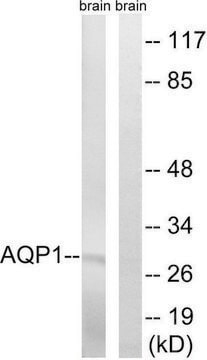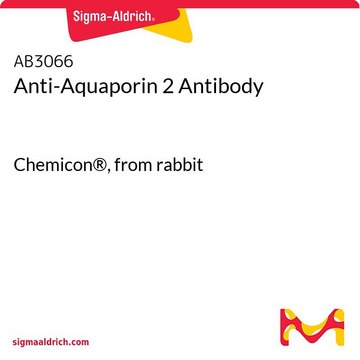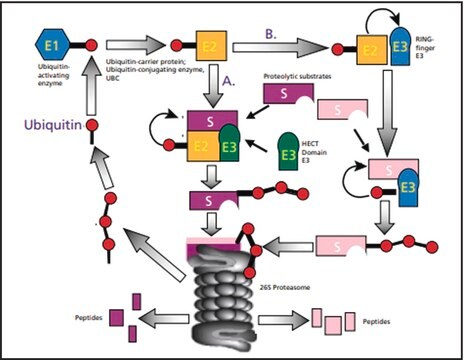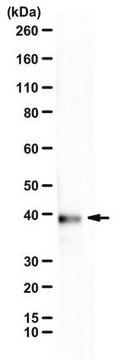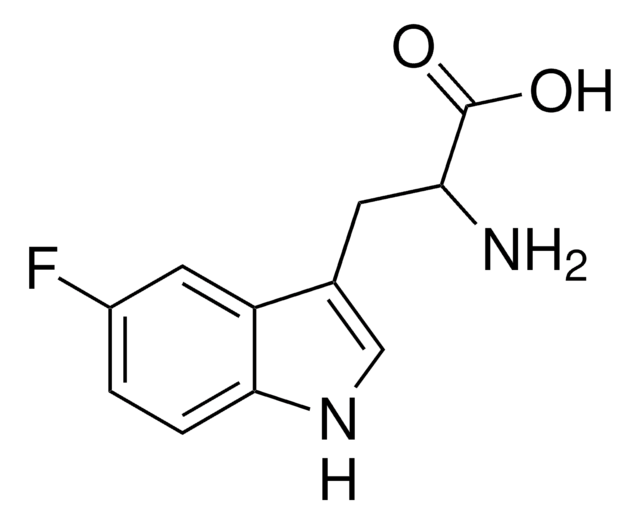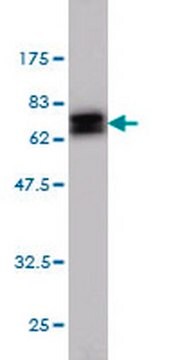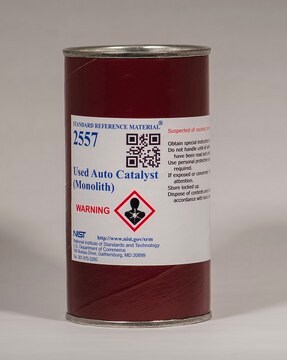ABS2130M
Anti-phospho RasGRP2 (Ser116/Ser117)
from rabbit
Synonym(e):
RAS guanyl-releasing protein 2, Calcium and DAG-regulated guanine nucleotide exchange factor I, CalDAG-GEFI, F25B3.3 kinase-like protein
About This Item
Empfohlene Produkte
Biologische Quelle
rabbit
Qualitätsniveau
Antikörperform
affinity isolated antibody
Antikörper-Produkttyp
primary antibodies
Klon
polyclonal
Speziesreaktivität
mouse, monkey
Speziesreaktivität (Voraussage durch Homologie)
rat (based on 100% sequence homology)
Verpackung
antibody small pack of 25 μg
Methode(n)
immunofluorescence: suitable
western blot: suitable
Isotyp
IgG
NCBI-Hinterlegungsnummer
UniProt-Hinterlegungsnummer
Posttranslationale Modifikation Target
phosphorylation (pSer116/pSer117)
Angaben zum Gen
mouse ... Rasgrp2(19395)
Allgemeine Beschreibung
Spezifität
Immunogen
Anwendung
Zelluläre Signaltransduktion
Western Blotting Analysis: A representative lot detected phospho RasGRP2 (Ser116/Ser117) in RasGRP2 purified from GST-Rasgrp2 transfected COS-7 cells and phosphorylated by GST-PKAc alpha, Forskolin stimulated mouse striatal muscle slices (Courtesy of Dr. Kozo Kaibuchi at Nagoya University, Japan).
Western Blotting Analysis: A representative lot detected phospho RasGRP2 (Ser116/Ser117) in a kinase assay with GST-Rasgrp2 (amino acids 1-374) and PKA, Forskolin and SKF81279 stimulated mouse striatal muscle slices, COS-7 cells transfected with EGFP-Rasgrp2 and Myc-PKA, nucleus accumbens (NAc) from mice treated with cocaine, Nucleus accu (Nagai, T., et. al. (2016). Neuron. 89(3):550-65).
Qualität
Western Blotting Analysis: A 1:1,000 dilution of this antibody detected RAS guanyl-releasing protein 2 in RasGRP2 purified from GST-RasGRP2 transfected COS-7 cells and phosphorylated on Ser116/Ser117 by GST-PKAc alpha
Zielbeschreibung
Physikalische Form
Lagerung und Haltbarkeit
Sonstige Hinweise
Haftungsausschluss
Sie haben nicht das passende Produkt gefunden?
Probieren Sie unser Produkt-Auswahlhilfe. aus.
Analysenzertifikate (COA)
Suchen Sie nach Analysenzertifikate (COA), indem Sie die Lot-/Chargennummer des Produkts eingeben. Lot- und Chargennummern sind auf dem Produktetikett hinter den Wörtern ‘Lot’ oder ‘Batch’ (Lot oder Charge) zu finden.
Besitzen Sie dieses Produkt bereits?
In der Dokumentenbibliothek finden Sie die Dokumentation zu den Produkten, die Sie kürzlich erworben haben.
Unser Team von Wissenschaftlern verfügt über Erfahrung in allen Forschungsbereichen einschließlich Life Science, Materialwissenschaften, chemischer Synthese, Chromatographie, Analytik und vielen mehr..
Setzen Sie sich mit dem technischen Dienst in Verbindung.